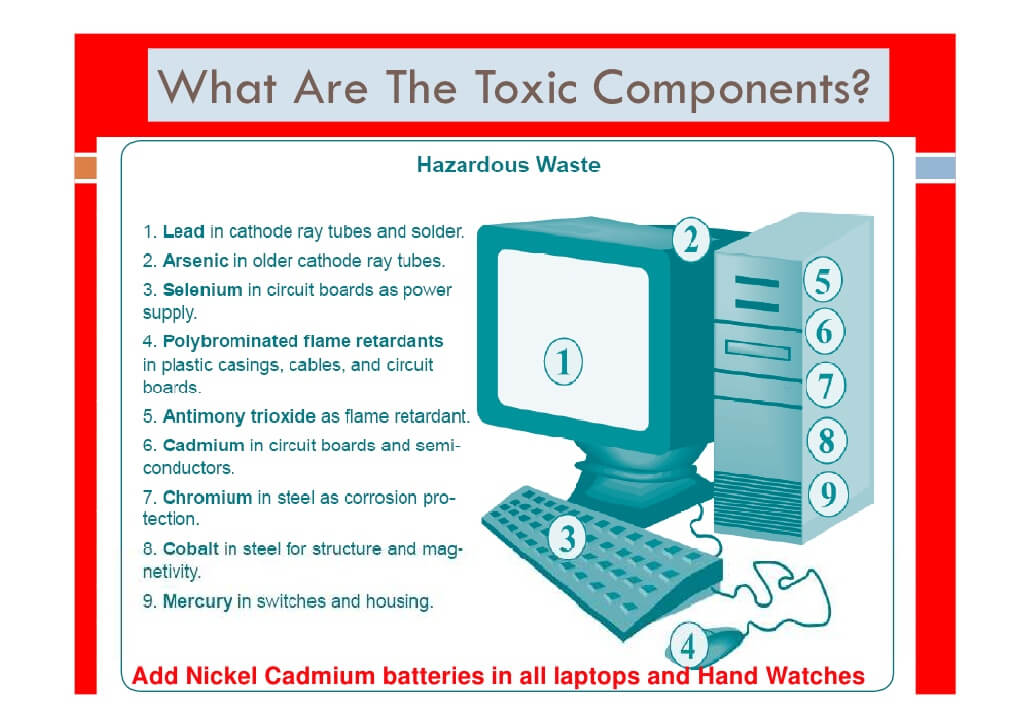Electronic devices are a complex mixture of hundreds of materials, many of which contain heavy metals such as lead, mercury, cadmium and hazardous chemicals.
PVC plastic is also widely used. A mobile cell phone, for example, contains between 500 to 1000 different compounds.
These hazardous substances generate pollution and place workers at risk of exposure when these products are manufactured and affect people's health when they are discarded at the end of their useful life.
Many people are unaware that the electronic devices they use daily contain toxic components. When these devices become waste, they end up in landfills, sanitary landfills or are even incinerated, contaminating the soil, groundwater or air, thus affecting the health of people.
Some toxic components that electronic devices contain are:
Brominated Fire Retardants (BFR): used in cell phones and computers, persistent exposure to these compounds can lead to learning and memory problems; they can interfere with the thyroid and the estrogen hormonal system. One thousand tons of RFB were used in 2004 to manufacture 674 million cell phones.
Cathode ray tubes: used in monitors and televisions, exposure to lead contained in cathode ray tubes can cause cognitive damage in children and can damage the nervous, reproductive and circulatory system in adults.
Cadmium: used in rechargeable batteries of computers; contacts and switches; and in old CRT monitors, it can accumulate in the environment and is highly toxic, mainly affecting kidneys and bones.
Mercury: used in flat-screen monitors as a lighting device and in primary batteries and can cause damage to the central nervous system, particularly in early stages of development.
Hexavalent chromium compounds: used in the production of metal roofs, they are highly toxic and carcinogenic.
Polyvinyl chloride (PVC): is a plastic used in electronic products as insulation in cables and wires. These chemicals are highly persistent in the environment and many are toxic, even at very low concentrations.
Nickel: used in mobile phone batteries, produces effects on the respiratory system, allergies, eye and skin irritation. Possible carcinogen and teratogenic.
Lithium: used in batteries, causes affections in the nervous system, respiratory failures and nausea.

